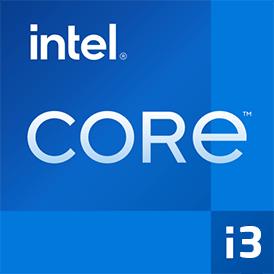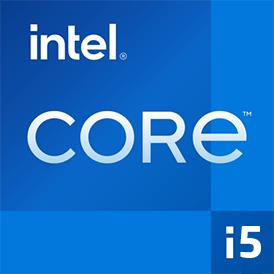 Geekbench 3, 64bit (Multi-Core)
Geekbench 3, 64bit (Multi-Core)
|
|
Intel Core i5-6600T
4C 4T @ 2.7 GHz
|
10383
|
|
|
Intel Core i3-3225
2C 4T @ 3.3 GHz
|
5412
|
 Estimated results for PassMark CPU Mark
Estimated results for PassMark CPU Mark
|
|
Intel Core i5-6600T
4C 4T @ 2.7 GHz
|
5665
|
|
|
Intel Core i3-3225
2C 4T @ 3.3 GHz
|
2246
|
 Geekbench 3, 64bit (Single-Core)
Geekbench 3, 64bit (Single-Core)
|
|
Intel Core i5-6600T
4C 4T @ 2.7 GHz
|
3710
|
|
|
Intel Core i3-3225
2C 4T @ 3.3 GHz
|
2570
|
 Geekbench 6 (Multi-Core)
Geekbench 6 (Multi-Core)
|
|
Intel Core i5-6600T
4C 4T @ 2.7 GHz
|
3198
|
|
|
Intel Core i3-3225
2C 4T @ 3.3 GHz
|
1195
|
 Geekbench 5, 64bit (Multi-Core)
Geekbench 5, 64bit (Multi-Core)
|
|
Intel Core i5-6600T
4C 4T @ 2.7 GHz
|
3111
|
|
|
Intel Core i3-3225
2C 4T @ 3.3 GHz
|
1376
|
 Geekbench 6 (Single-Core)
Geekbench 6 (Single-Core)
|
|
Intel Core i5-6600T
4C 4T @ 2.7 GHz
|
1142
|
|
|
Intel Core i3-3225
2C 4T @ 3.3 GHz
|
558
|
 Geekbench 5, 64bit (Single-Core)
Geekbench 5, 64bit (Single-Core)
|
|
Intel Core i5-6600T
4C 4T @ 2.7 GHz
|
897
|
|
|
Intel Core i3-3225
2C 4T @ 3.3 GHz
|
648
|
 Cinebench R15 (Multi-Core)
Cinebench R15 (Multi-Core)
|
|
Intel Core i5-6600T
4C 4T @ 2.7 GHz
|
513
|
|
|
Intel Core i3-3225
2C 4T @ 3.3 GHz
|
295
|
 iGPU - FP32 Performance (Single-precision GFLOPS)
iGPU - FP32 Performance (Single-precision GFLOPS)
|
|
Intel Core i5-6600T
4C 4T @ 2.7 GHz
|
442
|
|
|
Intel Core i3-3225
2C 4T @ 3.3 GHz
|
269
|
 Cinebench R15 (Single-Core)
Cinebench R15 (Single-Core)
|
|
Intel Core i5-6600T
4C 4T @ 2.7 GHz
|
149
|
|
|
Intel Core i3-3225
2C 4T @ 3.3 GHz
|
115
|
 Cinebench R11.5, 64bit (iGPU, OpenGL)
Cinebench R11.5, 64bit (iGPU, OpenGL)
|
|
Intel Core i5-6600T
4C 4T @ 2.7 GHz
|
36.2
|
|
|
Intel Core i3-3225
2C 4T @ 3.3 GHz
|
10.8
|
 Cinebench R11.5, 64bit (Multi-Core)
Cinebench R11.5, 64bit (Multi-Core)
|
|
Intel Core i5-6600T
4C 4T @ 2.7 GHz
|
5.6
|
|
|
Intel Core i3-3225
2C 4T @ 3.3 GHz
|
3.3
|
 Cinebench R11.5, 64bit (Single-Core)
Cinebench R11.5, 64bit (Single-Core)
|
|
Intel Core i5-6600T
4C 4T @ 2.7 GHz
|
1.8
|
|
|
Intel Core i3-3225
2C 4T @ 3.3 GHz
|
1.4
|

